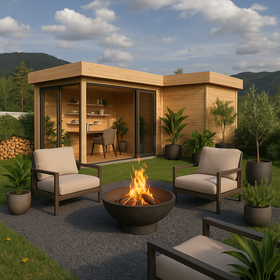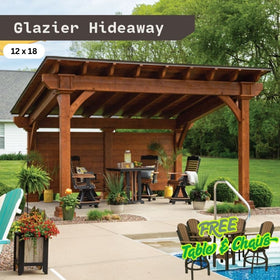512-777-0154

What is a Music Room in a House? Guide to Home Practice, Listening, and Studio Design
A music room is a special corner in your home where melodies rule and stress takes a back seat. Think of it as your creative escape: part practice zone, part relaxation haven, part pure joy. It gives that rhythm a place to live.
Whether you’re strumming, singing, or spinning old records, this space becomes your personal sound sanctuary.
I. The Essence of a Home Music Room: Definition and Purpose
A music room is more than a spare room with instruments. It’s a creative corner that encourages you to play, practice, or simply listen without distraction.
More Than a Hobby Room: The True Music Room Meaning
At its heart, a music room is a space where you can let music take center stage. It might be filled with instruments, cozy chairs, or recording gear.
What matters most is the atmosphere: it’s a place where focus meets freedom. It’s where the daily noise fades, and the only thing that matters is the sound you create.
What is a Music Room Used For? The Core Functions
Every music room has a personality. Some are lively practice spots for musicians fine-tuning their craft. Others are peaceful listening lounges where sound flows perfectly from speaker to soul. And for creators, a home studio is where inspiration turns into recorded tracks.
Whether you play, listen, or produce, your music room adapts to you.
What is a Music Room in a House Called? (Beyond the Basics)
You might hear different names for the same idea: a Project Studio, Listening Room, or even a Piano Room. Each term highlights its main purpose.
Whatever you call it, it’s your personal music haven tucked inside your home.
II. Specialized Music Room Functions at Home
A great music room is designed for how you use it. Let’s look at how to shape the space around your favorite musical moments.
1. Designing a Dedicated Music Practice Room at Home

A practice room is your stage, even if it’s tucked in a quiet corner. Keep the setup simple but intentional.
Add good lighting for reading music and soft flooring to absorb sound. A sturdy bench, a reliable music stand, and some acoustic panels go a long way. It’s not about how fancy it looks, it’s about how it feels when you play.
2. Creating the Ultimate Music Listening Room at Home
For music lovers, a listening room is a dream come true. The focus here is on sound clarity and comfort.
Place speakers at ear level, experiment with spacing, and control reflections with rugs or curtains. A soft couch, warm lighting, and maybe a small record shelf make it a spot you’ll never want to leave.
3. Setting Up a Professional Music Studio Room at Home
If you record or produce, your studio room becomes your creative lab. Think quiet, controlled, and clutter-free.
Use foam panels, bass traps, and a few rugs to manage reflections. Add essentials like microphones, a reliable interface, and studio monitors. Even a small space can deliver big results when set up right.
III. Technical Design: Acoustics, Soundproofing, and Size
Getting the sound right is just as important as having the right equipment. Acoustics shape the experience more than most people realize.
The Critical Role of Acoustics and Sound Control

Sound behaves differently in every room. That’s why sound dampening and sound isolation matter. Rugs, curtains, and acoustic foam reduce echoes, while heavy doors or panels keep the music inside.
The goal is control. You want a clear, balanced sound that feels alive, not trapped.
Music Room Wall Design for Better Sound and Aesthetics
Walls can make or break your sound. Cover them with panels or diffusers, or even line them with bookshelves for natural sound absorption.
You can mix practicality with personality: hang guitars, frame your favorite vinyl covers, or display instruments as art. It’s a design choice that both looks and sounds good.
Music Room Standard Size in Meters (and Why Dimensions Matter)
Music rooms don’t need to be massive. Most fall between 10 and 20 square meters, depending on purpose. Practice spaces do well around 12–15 m², while studios often benefit from 15–20 m². Balanced dimensions, such as a 1.6:1 ratio, help reduce unwanted echoes and uneven sound.
It’s all about proportion, not size.
IV. Practical Planning: Furniture, Equipment, and Organization
Every great music space balances comfort, function, and personality. How you furnish it affects how often you’ll want to be there.
1. Essential Furniture for Comfort and Function
A chair that supports long sessions. A keyboard stand that adjusts to your height. A table that fits your setup without crowding the room.
These small details keep your body relaxed and your mind focused. Comfort isn’t a luxury; it’s a tool for better music.
2. Smart Storage for Instruments and Gear
Music gear takes up space, but smart storage makes it part of the decor. Mount guitars on walls, slide amps under desks, and use shelving for sheet music or vinyl records.
Displaying your gear keeps it accessible and adds character to the room.
3. Equipment Considerations for Different Music Types
Digital creators might prioritize a good pair of studio monitors and a MIDI controller. Acoustic players might focus on amps, stands, or quality microphones. Audiophiles lean toward amplifiers and high-fidelity speakers.
Choose gear that fits how you enjoy music, not just how it looks.
V. Music Room Ideas for Small Spaces and Budget Solutions
Not everyone has a spare room, but that doesn’t mean you can’t have a music space. A little creativity turns small corners into sound-friendly spots.
Transforming a Corner into a Small Music Nook
Even the smallest space can be musical. A bedroom corner or a quiet hallway can hold a keyboard or a record player. Use vertical storage and foldable furniture to save space. Add a few personal touches, and you’ve got your own little studio.
Multi-Purpose Room Design
If your home office or library doubles as a music area, go for flexible design. Acoustic rugs, movable panels, and modular furniture make it easy to switch from work mode to jam mode. It’s about blending creativity with practicality.
Small Room Music: Tips for Managing Sound in Tight Spaces
Smaller rooms can trap low frequencies, making the sound muddy. Use corner bass traps or thick rugs to smooth things out. Keep speakers a little away from walls and experiment with placement.
Sometimes, a few small changes make a big difference.
Harmonizing Your Home with a Music Room
A music room isn’t just about instruments or fancy gear. It’s about creating space for expression, peace, and joy. Whether it’s a full studio or a cozy corner, it gives music a home.
Build it your way. Fill it with sounds you love. And let your home find its rhythm again.






